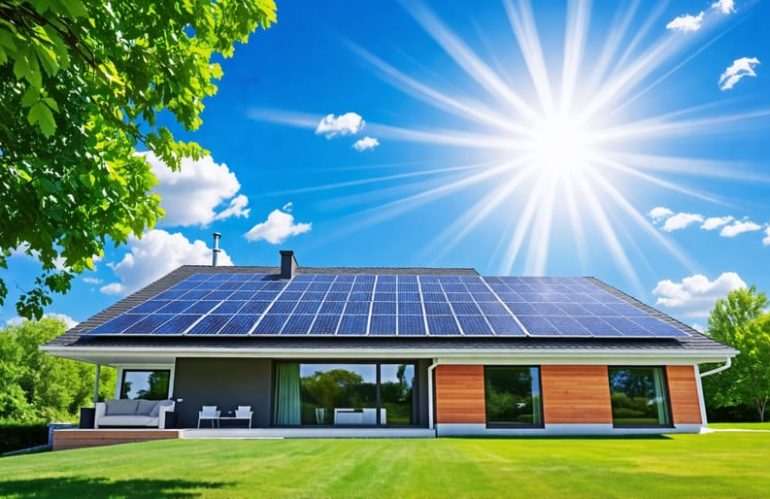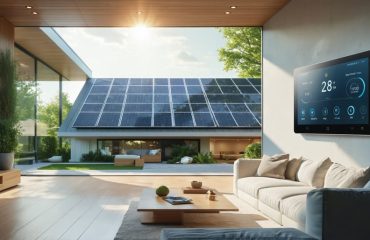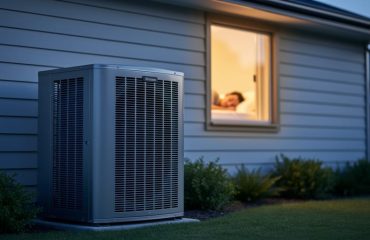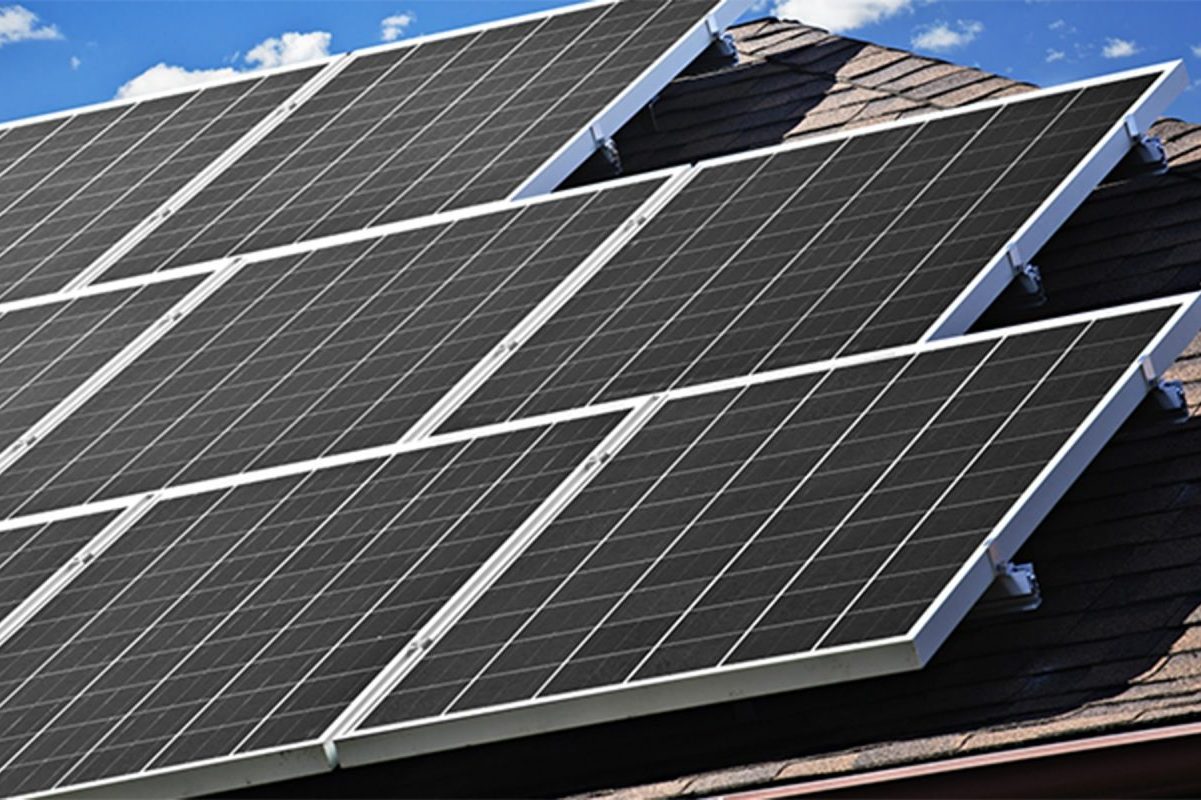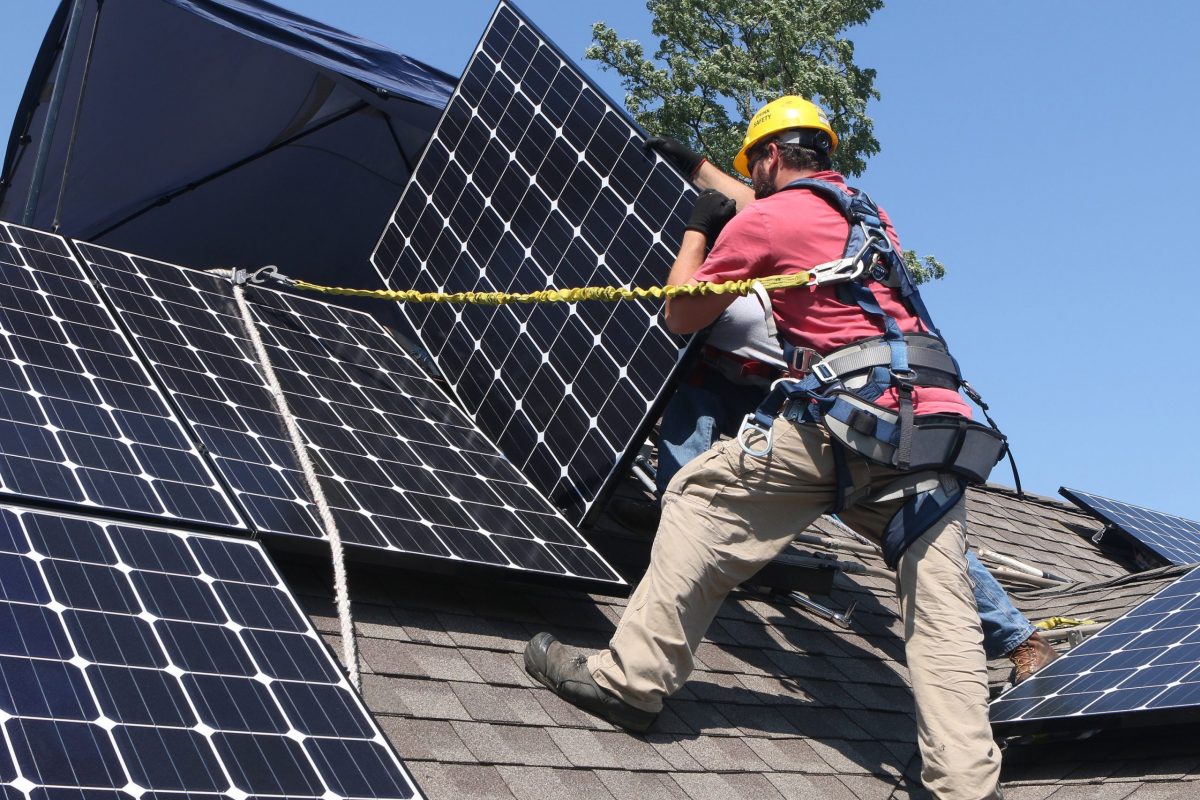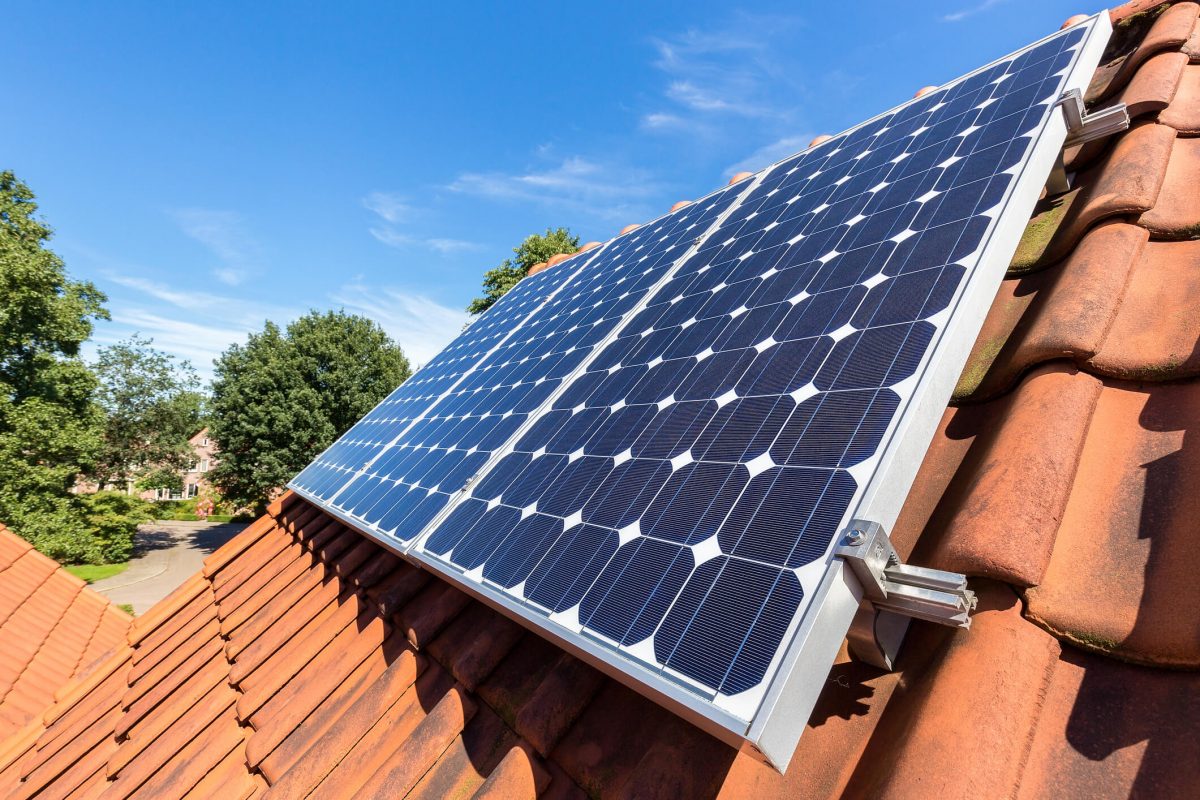Slash your electricity bills and reduce your carbon footprint by harnessing the benefits of residential solar power. Assess your home’s solar potential by evaluating your roof’s size, angle, and sun exposure. Get quotes from reputable solar installers to compare costs and equipment. Take advantage of tax credits, rebates, and financing options to make going solar affordable. Join the renewable energy revolution and power your home with clean, abundant sunshine.
How Do Solar Panels Work?
The Photovoltaic Effect
The photovoltaic effect is the process by which solar cells convert sunlight into electrical energy. When sunlight strikes a solar cell, it excites electrons within the cell’s semiconductor material, causing them to break free from their atoms and flow through the material, generating an electric current. This current is then captured by conductive metal contacts on the top and bottom of the cell, allowing it to be harnessed for power. The more sunlight that hits the cell, the more electricity it produces. Solar panels are made up of many individual solar cells connected together, amplifying the total electrical output. By leveraging the photovoltaic effect, solar panels can convert the sun’s abundant, renewable energy into usable electricity for your home, reducing reliance on the grid and fossil fuels. With technological advancements improving solar cell efficiency, the photovoltaic effect is becoming an increasingly viable way to power homes sustainably.
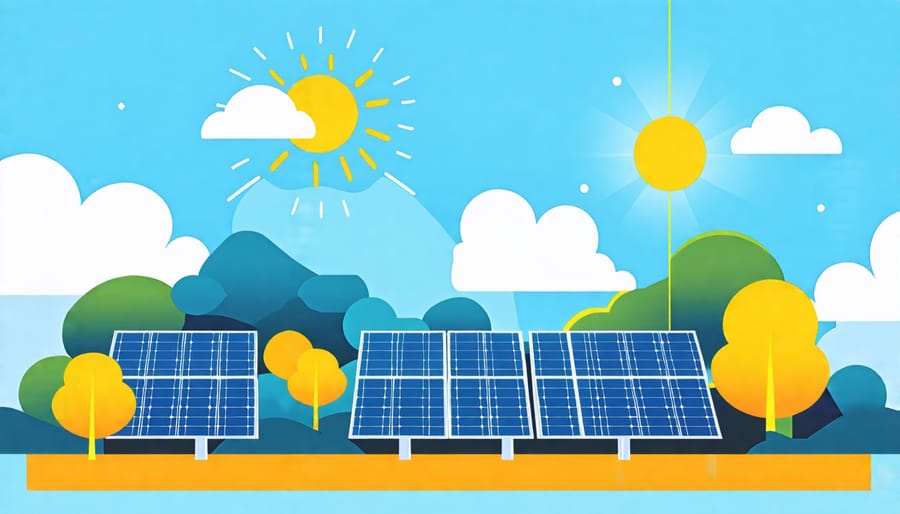
Solar Panel Components
Solar panels consist of several key components that work together to convert sunlight into usable electricity. The most essential part is the solar cells, which are typically made from silicon and are responsible for absorbing sunlight and generating an electrical current. These cells are connected together to form a solar panel.
An inverter is another crucial component that converts the direct current (DC) electricity generated by the solar cells into alternating current (AC) electricity, which is the type used in homes. Racking systems are used to mount the solar panels securely on your roof or ground, ensuring they are angled correctly to maximize sun exposure.
Proper wiring is essential to connect the solar panels to the inverter and the rest of your home’s electrical system. This includes using the correct gauge of wire and properly grounding the system for safety. Together, these components create a reliable and efficient solar power system for your home.
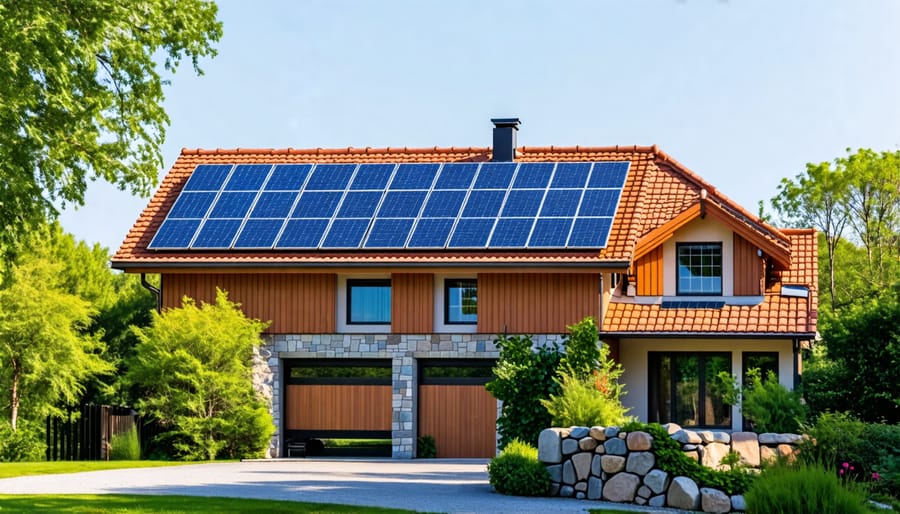
Is Solar Right for Your Home?
Evaluating Your Roof
When evaluating your roof for solar potential, the first step is to assess the available unshaded area. Solar panels require direct sunlight to generate electricity efficiently, so it’s crucial to identify any obstacles that may cast shadows on your roof, such as tall trees, neighboring buildings, or chimney stacks. If your roof has significant shading, consider trimming trees or exploring ground-mounted solar panels as an alternative.
The orientation of your roof also plays a vital role in solar production. In the northern hemisphere, south-facing roofs receive the most direct sunlight throughout the day, making them ideal for solar panels. However, east- and west-facing roofs can also be suitable, although they may generate slightly less energy. If your roof has multiple sections facing different directions, you can still take advantage of solar power by installing panels on the most favorable areas.
Another factor to consider is the pitch or tilt of your roof. While solar panels can be installed on roofs with various slopes, the optimal angle for maximum solar production is typically between 30 and 45 degrees. If your roof is relatively flat or has a low pitch, your solar installer may recommend using tilted mounting racks to optimize the panels’ angle towards the sun.
Sizing Your Solar System
To determine the number of solar panels needed for your home, start by calculating your average monthly electricity consumption in kilowatt-hours (kWh). Examine your utility bills for the past year and find the average. Next, consider your location’s solar irradiance, which is the amount of sunlight available to generate electricity. This information can be found using online tools or by consulting a local solar installer.
With these two factors in mind, you can estimate the size of the solar system required to offset your energy usage. As a general rule of thumb, a 1 kW solar system generates around 4 kWh of electricity per day in areas with good solar irradiance. Divide your daily energy consumption by 4 to get a rough estimate of the system size you need in kilowatts.
For example, if your household consumes an average of 30 kWh per day, you would need approximately a 7.5 kW solar system (30 kWh / 4). To convert this to the number of panels, divide the system size by the wattage of the solar panels you plan to use. If you choose 250-watt panels, you would need about 30 panels (7.5 kW / 250 watts).
Keep in mind that this is a simplified calculation, and factors like roof orientation, shading, and panel efficiency can impact the actual number of panels required. Consult with a professional solar installer to get a more accurate assessment of your home’s solar potential and system size requirements.
The Solar Installation Process
Choosing an Installer
When choosing a solar installer, experience and expertise are crucial. Look for companies with a proven track record of successful installations and positive customer reviews. Verify that the installer is licensed and certified by relevant industry organizations, such as the North American Board of Certified Energy Practitioners (NABCEP). This ensures they adhere to industry standards and best practices.
Consider the warranties offered by the installer, both for the installation work and the solar equipment itself. A reputable installer should provide comprehensive warranties that cover defects, performance, and workmanship for an extended period, typically 10-25 years.
Read reviews and testimonials from previous customers to gauge their satisfaction with the installer’s communication, professionalism, and overall service quality. Reach out to the installer with any questions or concerns you may have, and evaluate their responsiveness and clarity in addressing your inquiries.
Finally, compare quotes from multiple installers to ensure you’re getting a fair price for the system size and quality you require. While cost is an important factor, avoid making your decision solely based on the lowest price. Prioritize installers who offer the best combination of experience, quality, and value to ensure a smooth and reliable solar installation process.
Paperwork and Permits
Before installing solar panels, homeowners must navigate the paperwork and permits required by local authorities and utility companies. While the process may seem daunting, it’s a necessary step to ensure your system is safe, legal, and eligible for incentives. Typically, you’ll need to obtain building permits, electrical permits, and zoning approvals from your local government. Additionally, you must submit an interconnection agreement to your utility company, which allows your solar system to connect to the grid and enables net metering. To qualify for federal and state incentives, such as tax credits and rebates, you’ll need to complete the appropriate forms and provide proof of installation. Your solar installer should be well-versed in these requirements and can guide you through the process, making it more manageable. While the paperwork may take some time, the long-term benefits of solar power make it a worthwhile investment.
Installation Day
On installation day, expect a team of professional installers to arrive with the necessary equipment, including solar panels, inverters, and mounting hardware. The installation process typically takes one to three days, depending on the size and complexity of your system. The installers will work diligently to secure the mounting equipment to your roof, connect the electrical wiring, and install the solar panels. While there may be some noise from drilling and other installation activities, the crew will strive to minimize disruption to your daily routine. Once the installation is complete, the system will undergo a thorough inspection to ensure it meets all local building codes and safety requirements. Your installer will then guide you through the necessary steps to connect your system to the grid and begin harnessing the power of the sun to generate clean, renewable energy for your home.
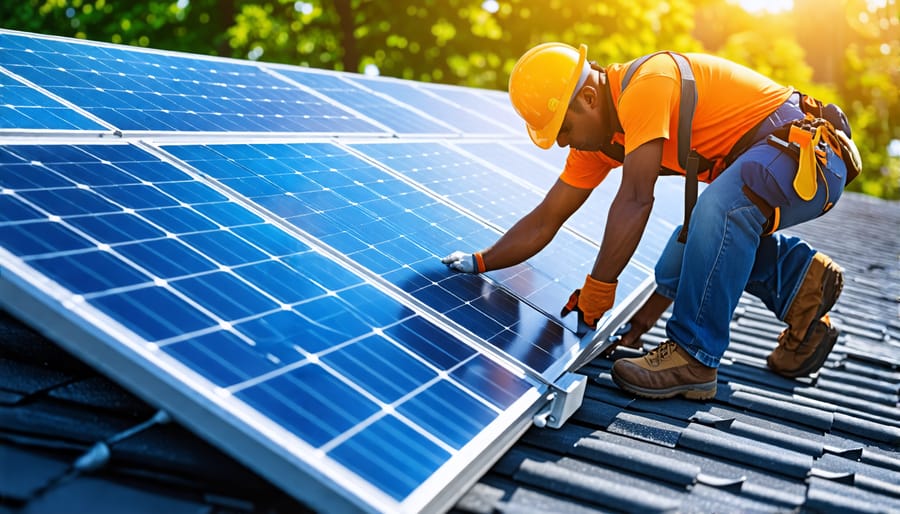
Solar Incentives, Rebates and Financing
Federal and State Tax Credits
The federal government offers a solar investment tax credit (ITC) that allows homeowners to deduct a significant portion of their solar installation costs from their federal taxes. As of 2021, the ITC stands at 26% of the total cost of your solar energy system. This means that if your solar installation costs $20,000, you can claim a $5,200 credit on your federal taxes. The ITC is set to decrease to 22% in 2023 and expire in 2024 unless Congress extends it, so now is an excellent time to take advantage of this incentive.
In addition to the federal ITC, many states offer their own solar tax credits and incentives. These vary by state but can include additional tax credits, rebates, and performance-based incentives. Some states also offer net metering policies, which allow homeowners to sell excess solar energy back to the grid for credit on their utility bills. Check with your state’s energy department or a local solar installer to learn about the specific incentives available in your area.
Solar Loans, Leases and PPAs
When considering financing options for solar power, homeowners have several choices, including loans, leases, and power purchase agreements (PPAs). Solar loans allow you to own your solar system by borrowing money from a lender and repaying it over time, often with fixed monthly payments. The main advantage of a solar loan is that you can take advantage of federal and state incentives, such as tax credits, which can significantly reduce the overall cost of your solar installation. Additionally, once you pay off the loan, you own the system outright and can enjoy free electricity for the remainder of its lifespan.
Solar leases and PPAs, on the other hand, involve third-party ownership of the solar system. With a lease, you pay a fixed monthly amount to use the solar panels on your roof, while a PPA involves purchasing the electricity generated by the panels at a predetermined rate, usually lower than your current utility rates. The main benefit of leases and PPAs is that they require little to no upfront cost, making solar accessible to more homeowners. However, you won’t be eligible for tax incentives, and you won’t own the system, which means you won’t benefit from the long-term savings that come with ownership.
Ultimately, the best financing option for you will depend on your specific financial situation, long-term goals, and the availability of incentives in your area. It’s essential to thoroughly research and compare the different options, consult with solar professionals, and crunch the numbers to determine which path aligns best with your needs and budget.
Conclusion
In conclusion, harnessing the power of the sun to generate clean, renewable energy for your home is an investment that pays off in both financial and environmental benefits. By assessing your home’s suitability, understanding the installation process, and exploring financing options, you can make an informed decision about going solar. Remember, solar power not only reduces your carbon footprint but also provides long-term savings on your energy bills. With advancements in technology and increasing affordability, there has never been a better time to embrace solar energy. Take the first step towards a sustainable future by scheduling a free solar consultation with a reputable installer. They will guide you through the process, answer your questions, and help you determine the best solar solution for your home. Don’t wait – start your journey towards energy independence and a greener lifestyle today!

